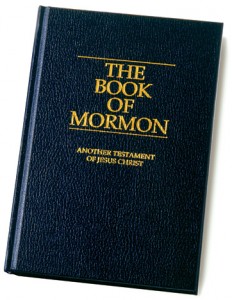The term anti-Mormon is used to describe a person or group actively opposing Mormonism. It does not refer to groups of people who don’t understand the Church, or disagree with or criticize it. An anti-Mormon represents a more extreme category. For anti-Mormons, the existence of the Mormon Church is something that cannot be tolerated, whether for religious reasons, or political and social ones. Ever since the Mormon Church was established in 1830, there have been anti-Mormons. Since the establishment of the Mormon Church, there have always been anti-Mormon sentiments and even groups.
 In the early days of the Church, anti-Mormons criticized, especially, Joseph Smith and the Book of Mormon. Joseph Smith’s claims that he had received revelation from God, and that God had led him to find, translate, and publish the Book of Mormon were seen as odd and unbelievable. Many early anti-Mormon publications focused on disproving the Book of Mormon, dismissing it as fraudulent or plagiarized – in any case, the product of Joseph Smith (or stolen by him), not God. Anti-Mormons also criticized Joseph Smith and his family, who were not well educated or particularly well off.
In the early days of the Church, anti-Mormons criticized, especially, Joseph Smith and the Book of Mormon. Joseph Smith’s claims that he had received revelation from God, and that God had led him to find, translate, and publish the Book of Mormon were seen as odd and unbelievable. Many early anti-Mormon publications focused on disproving the Book of Mormon, dismissing it as fraudulent or plagiarized – in any case, the product of Joseph Smith (or stolen by him), not God. Anti-Mormons also criticized Joseph Smith and his family, who were not well educated or particularly well off.
Beyond publications, anti-Mormon feelings also ran to violence. Mormons had a strong presence in Missouri and Illinois and, because of their numbers and their difference, this strong presence was often met with fear. People worried that Mormons would take over the state. In 1838, the governor of Missouri signed the Extermination Order, which expelled the Mormons from the state. Joseph Smith was put in jail and mob violence peaked against the Mormons until they finished fleeing to Illinois. But, in Illinois, in 1844, Joseph Smith and his brother Hyrum were murdered by a mob. The Mormon leaders decided to lead the Church to an area outside the boundaries of the United States, thus the Mormon migration to Utah. The practice of Mormon polygamy, however, caused a renewal of anti-Mormon sentiment.
The United States passed antipolygamy laws and, during this time and often after, Mormons were portrayed and perceived as highly immoral. These portrayals were manifested in law, in newspaper rhetoric, and in fiction. The U.S. government began confiscating Church property and imprisoning members. The Mormon Church published a statement in 1890, which officially ended the practice of polygamy. Much of the anti-Mormon fervor died away.
Today, the Mormon Church does not draw nearly so much controversy. Mormons are more likely to be seen as uptight, naïve, or over-scrupulous than dangerous or evil. And many people hold a very positive image of Mormons as honest and honorable and faithful to their values. However, people and organizations do still strongly oppose the LDS Church and anti-Mormon publications still exist widely – and, like early anti-Mormon publications, often focus on discrediting Joseph Smith and the Book of Mormon. Mormons believe these publications usually widely distort or misrepresent Mormon beliefs.
Probably the most well-known and most publicized anti-Mormon activity involves protesting outside the Mormon conference center during Conference (a worldwide Mormon meeting) and in front of Mormon temples during open house. Indeed, protesters may show up at any major function of the Church. Protests increased after the Church supported Proposition 8 in California. Proposition 8 passed by a narrow margin and defined marriage as the union between a man and a woman. Thus, pro-gay-rights activists instigated protests against the Church. Church leaders counsel members not to react to or debate with anti-Mormon protesters, but to keep their responses, “in the form of a positive explanation of the doctrines and practices of the Church.”1
Mormon Church leaders also counsel those who wish to learn about the Mormon Church to get their information straight from the Church – to read the Book of Mormon themselves and judge based on that, rather than relying on other, outside sources, which may be hostile.
